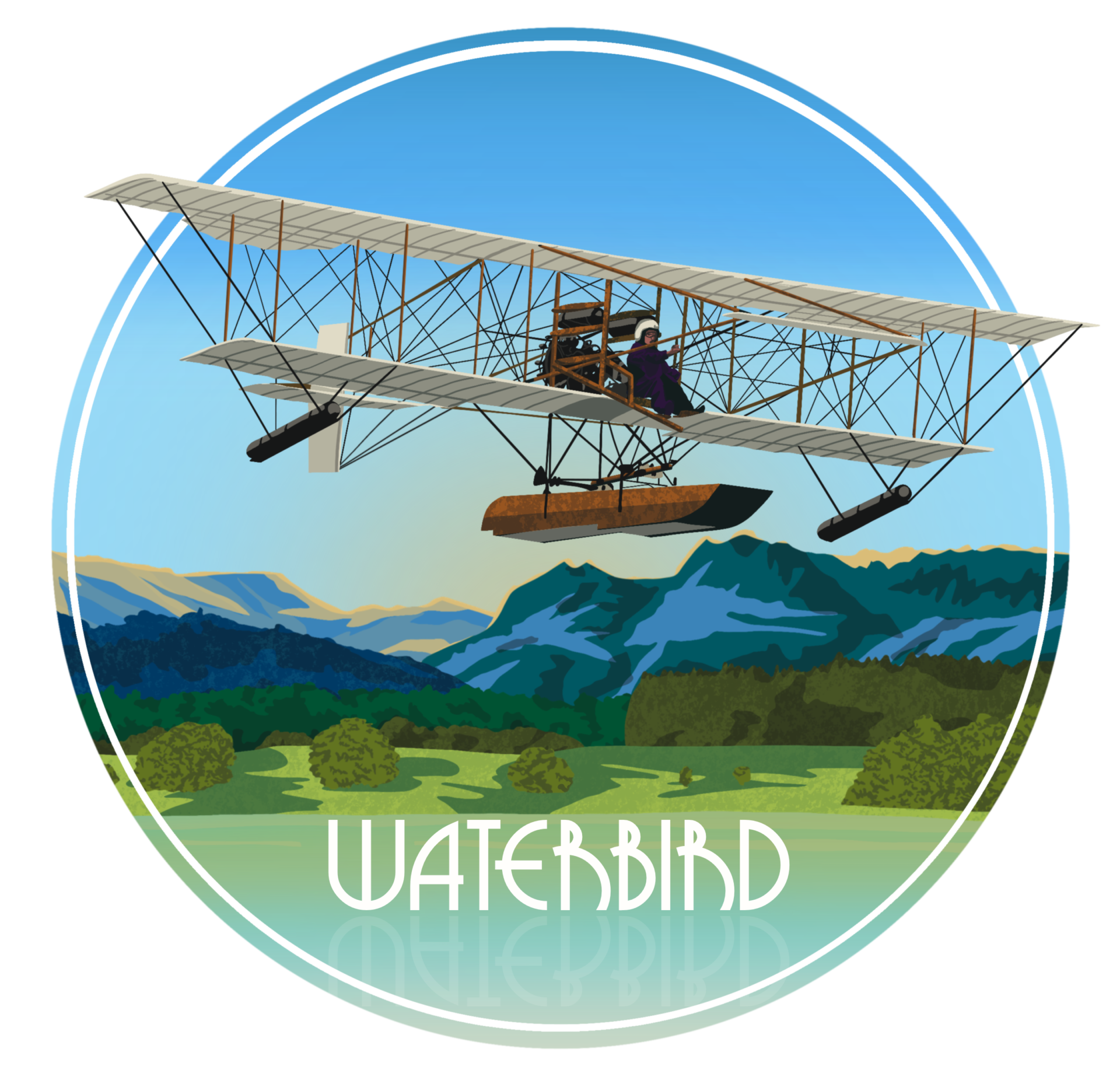Lieutenant Colonel Herbert Hugo St. Ledger Stanley-Adams, DSC, MBE (1884 – 1965)
Herbert Stanley Adams (nicknamed Sol after Solomon the Wise) was recruited in July 1911 by Edward Wakefield to be his pilot at Windermere, where he remained until he volunteered for service in the Royal Naval Air Service upon the outbreak of World War 1.
They met at Brooklands, where Waterbird was flight-tested as a landplane. Adams was then a pupil at the A. V. Roe & Company (‘Avro’) Flying School, taking his first lesson on 12 May 1911 and obtaining Royal Aero Club Aviator’s Certificate No. 97 on 27 June 1911 ‘in easy style’. He was complimented by Howard Pixton, the Chief Instructor and Britain’s first professional test pilot, as being ‘one of the best Avro pupils’. (In 1919, Pixton operated seaplanes at Windermere for the Avro Transport Company.)
Adams had previously been a trainee engineer at Rolls-Royce Ltd. He pointed out to Wakefield that there was a crack in a cylinder of Waterbird’s Gnome engine; the Green engine of Commander (later Air Vice Marshal, KCB CBE) Schwann’s (later Swann) Avro D at Barrow-in-Furness was only made to function after Adams had correctly re-assembled the rocker gear.
On 25 November 1911, Adams made an historic achievement in Waterbird by successfully taking off and alighting at Windermere. This was the first successful flight by a hydro-aeroplane outside France and America. There had been a period of bad weather, and Wakefield was not present. Adams therefore sent a telegram to Wakefield.
When The Lakes Flying Company was formed on 20 December 1911, Adams entered into a Partnership Deed by which he was given a share of profits, free accommodation at Hill of Oaks bungalow and appointed as Manager with a salary of £208 per year. Wakefield described him as ‘the best partner for the job that any man ever had’.
By 25 January 1912, Adams had made 60 flights in Waterbird, reaching 800 feet and as far as 20 miles.
By the end of November 1912, Adams had accomplished about 250 flights in Waterhen, Waterbird’s successor, and carried over 100 passengers. He flew as far away as Hornsea in Yorkshire, Waterhen having been transported by traction engine.
Wakefield concluded a contract with the Admiralty to convert an Admiralty Deperdussin into a hydro-aeroplane, which he accomplished in 3 weeks.
On 16 July 1912, when Adams flew Wakefield in the Deperdussin he became the first passenger in the world to fly in a hydro-monoplane.
Piloted by Adams, Gertrude Bacon became the first passenger to make a circuit of the lake (in Waterhen), the first woman in the world to fly as a passenger in a hydro-aeroplane (Waterhen) and in a hydro-monoplane (the Deperdussin).
Seabird was also flown by Adams, which had been manufactured by Avro but rebuilt at Windermere.
In December 1912, Adams test flew the Avro 501 at Eastchurch on behalf of Avro, the float having been designed by Oscar Gnosspelius, built to the orders of the Admiralty.
Whilst Adams was not an employee of Avro, his pioneering work on Avro floatplanes at Windermere and elsewhere was such as to warrant inclusion as a Chief Test Pilot by Peter V Clegg in his book Avro Test-Pilots since 1907.
Having hyphenated his last 2 names, Stanley-Adams immediately volunteered for service in the Royal Naval Air Service at the outbreak of World War 1. He trained at RNAS Calshot and RNAS Killingholme, and was then transferred to RNAS Grain Island and RNAS Immingham.
He was promoted to Flight Commander on 1 January 1916. This photo was taken at RNAS Imbros, Turkey shortly before he led a flight of 9 Nieuport 11’s on 25 November 1916 [5 years since he first flew Waterbird] to Bucharest. He had to make a forced landing 16 miles short due to bad weather and failure of oil supply, so his aeroplane (No. 3978) was carried by truck for the rest of the journey.
In 1917, he was in command of No. 4 Wing at RNAS Dover and of the RNAS War School at Manston. From 20 February 1918, he served at RNAS Dunkirk and in command of the North West Area 30th Wing. He transferred to the Royal Air Force upon its formation and as a Squadron Leader on 14 May 1920 was posted to the RAF School, India. He resigned his commission on 21 September 1921.
Stanley-Adams joined Scotland Yard in 1925 as a civilian transport officer, from which he retired in 1952.
– On 13 July 1916, Stanley-Adams was Mentioned in Despatches for distinguished and gallant services in the Eastern Mediterranean. On 1 October 1917, he was awarded the Distinguished Service Cross for services in reconnaissance and bombing flights in the Eastern Mediterranean.
